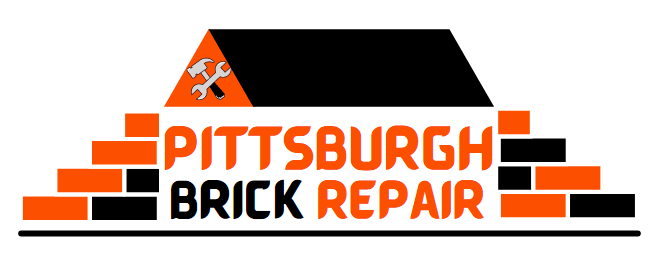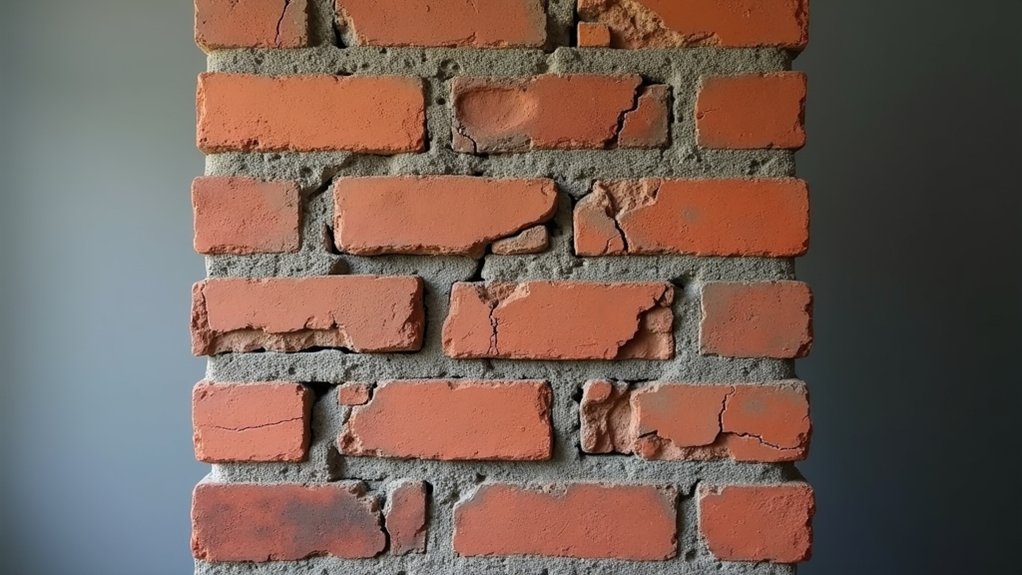Have you noticed unsettling cracks spreading across your chimney’s surface? These structural warning signs aren’t just cosmetic—they’re potential indicators of serious underlying issues that could compromise your home’s safety and integrity. Your chimney’s health matters, and understanding why these cracks develop is the first step toward protecting your property from costly damage. What mysterious forces might be silently weakening your chimney’s foundation?
Understanding Chimney Structural Integrity
Chimneys are complex structural designs that rely on several key components to maintain their structural integrity. You’ll want to understand how various factors impact your chimney’s stability.
Chimney reinforcement options like steel bracing and foundation repairs can help prevent further damage. Chimney stabilization methods, including mortar joint repair and structural assessment, are critical for long-term preservation.
When cracks appear, they’re often signs of underlying structural stress that needs professional evaluation. By identifying potential weaknesses early, you can protect your home’s safety and prevent costly future repairs.
Regular inspections are your best defense against structural deterioration. Skilled chimney repair professionals in Pittsburgh can provide expert assessments to ensure your chimney remains structurally sound and leak-free.
The Impact of Age and Natural Wear
As structures age, they naturally experience wear and tear that can significantly impact their integrity. Your chimney isn’t immune to weathering patterns and thermal cycling effects that gradually weaken its structure.
Over time, repeated temperature changes cause materials to expand and contract, creating microscopic cracks that can grow larger. These tiny fissures might seem insignificant initially, but they’ll become more pronounced if left unchecked.
Masonry materials like brick and mortar are especially vulnerable to this natural deterioration process. Regular inspections can help you catch and address these age-related issues before they become serious structural problems. Foundation repair specialists recommend addressing structural wear early to prevent costly future damage.
Moisture and Water Damage Explained
Water poses a significant threat to your chimney’s structural integrity, often picking up where age-related wear leaves off. Freeze-thaw cycles can wreak havoc on your masonry, causing tiny cracks that expand and contract with temperature changes. These microscopic openings become gateways for water intrusion, allowing moisture to seep deep into your chimney’s structure.
When water penetrates these vulnerable spots, it can cause serious damage. The moisture weakens mortar joints, deteriorates bricks, and creates conditions perfect for mold growth. Protecting your chimney from water damage isn’t just about maintenance—it’s about preserving your home’s safety and value.
Foundation Settlement and Chimney Stress
When your home’s foundation shifts, it can create unexpected stress on your chimney’s structure. Seasonal weather patterns like freezing and thawing can accelerate foundation movement, causing potential damage to your chimney’s integrity.
Consider these key factors:
- Uneven ground settlement can trigger structural misalignment
- Soil composition and moisture levels impact foundation stability
- Structural reinforcement might be necessary to prevent further cracking
Foundation stress transfers directly to your chimney, creating visible cracks and potential structural risks. Addressing these issues early can save you significant repair costs and prevent more extensive damage to your home’s essential structural elements.
Temperature Fluctuations and Material Expansion
Because chimneys are exposed to dramatic temperature changes, they’re particularly vulnerable to material expansion and contraction. These thermal cycling effects can cause significant stress on your chimney’s structure, leading to potential cracks and damage.
Different building materials expand and contract at varying rates, which creates material compatibility issues that compromise structural integrity. When temperatures rapidly shift between hot and cold, the masonry and mortar joints undergo repeated stretching and shrinking. This constant movement weakens the chimney’s connections, eventually causing visible fractures that can compromise your home’s safety and performance.
Poor Construction and Initial Design Flaws
Approximately 30% of chimney failures stem from poor initial construction and design flaws that compromise structural integrity from the very beginning. When builders use substandard materials or fail to provide adequate reinforcement, you’re setting yourself up for future problems that can become costly and dangerous.
Your chimney might suffer from:
- Weak mortar joints that crumble easily
- Insufficient foundation support
- Improper brick or stone alignment
These construction shortcomings create weak points that invite moisture penetration, thermal stress, and eventual structural breakdown. By understanding these initial design vulnerabilities, you can better protect your home’s vital chimney infrastructure.
Professional Assessment and Repair Techniques
If chimney cracks have left you worried about your home’s safety, professional assessment and repair techniques can provide critical solutions. A detailed inspection by a qualified mason will help you understand the extent of damage through thorough structural analysis. They’ll examine mortar joints, assess underlying causes, and recommend targeted repairs that restore your chimney’s integrity.
Depending on the severity, professionals might suggest tuckpointing, sealing, or even partial reconstruction. By addressing cracks early, you’ll prevent further deterioration and protect your home from potential water damage and structural risks.
Preventative Maintenance Strategies for Homeowners
Homeowners can safeguard their chimneys against potential damage through proactive maintenance strategies that prevent costly repairs. By implementing key preventative measures, you’ll protect your home’s structural integrity and avoid unexpected expenses.
Key maintenance strategies include:
- Establishing regular inspection schedules with professional chimney inspectors
- Installing and maintaining proper ventilation systems to reduce moisture buildup
- Performing annual cleaning and addressing minor cracks immediately
Staying ahead of potential chimney issues means being attentive and proactive. Your diligence can save you significant money and preserve your home’s value in the long run.
Frequently Asked Questions
Can Small Cracks in My Chimney Lead to Major Structural Problems?
Small cracks can compromise your chimney’s structural integrity, potentially allowing water infiltration that’ll worsen damage and create serious long-term issues if you don’t address them promptly.
How Quickly Do Chimney Cracks Typically Worsen Over Time?
Freeze-thaw cycles can rapidly accelerate chimney crack progression, potentially compromising your home’s structural integrity within months. You’ll want to address minor cracks immediately to prevent extensive, costly damage.
Is It Safe to Use a Chimney With Visible Cracks?
You shouldn’t use a chimney with visible cracks until a professional inspects its integrity, evaluating potential fire hazards. Prioritize your safety and get an expert assessment before risking potential structural damage.
What’s the Average Cost to Repair a Cracked Chimney?
You’ll spend $500 to $3,000 repairing a cracked chimney, with costs varying by crack severity, chimney type, and repair method. Factors like material and accessibility profoundly impact your total expense.
Do DIY Chimney Repair Kits Actually Work for Crack Fixes?
DIY chimney repair kits work for minor cracks, but they’re not always cost effective. Professional recommendations suggest consulting experts for reliable, long-lasting repairs that’ll keep your home safe and sound.

